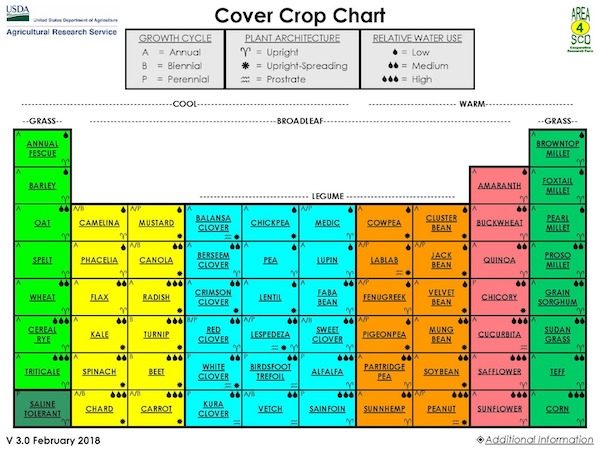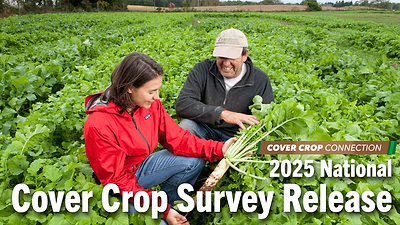By Mark Liebig, NRCS-Mandan, N.D.
The Cover Crop Chart (v. 3.0) is designed to assist producers with decisions on the use of cover crops in crop and forage production systems.
The chart, patterned after the periodic table of elements, includes information on 66 crop species that may be planted individually or in cocktail mixtures. Information on growth cycle, relative water use, plant architecture, seeding depth, forage quality, pollination characteristics, and nutrient cycling are included for most crop species.
The Cover Crop Chart is easy to use, requiring only Adobe Acrobat software. Using the chart as a guide, users can select individual crop species by clicking on the name which will direct them to additional information about the selected crop. Icons within each crop page return the user to the chart, thereby easily allowing comparisons of different crops.
Click here to download the chart.
The Cover Crop Chart represents a compendium of information from multiple sources, and is not based on research conducted at the USDA-ARS Northern Great Plains Research Laboratory (NGPRL).
Primary sources of information included the Midwest Cover Crops Council, USDA-SARE, USDA-NRCS Plants database, relevant peer-reviewed journal articles and the 3rd edition of Managing Cover Crops Profitably publication.
Information on specific crops is occasionally generalized and/or approximate, and may not reflect performance in on-farm conditions. Accordingly, USDA-ARS makes no guarantee to the performance of specific crops based on information provided within the Cover Crop Chart.
The Cover Crop Chart is produced and distributed by staff of the USDA-ARS in Mandan, N.D.
Mark Liebig and Holly Johnson contributed to the design and content of the chart with input from NGPRL staff, producers and technicians from the Area IV Soil Conservation Districts of North Dakota, NRCS staff at the Bismarck and Dickinson field/area offices, ARS staff conducting cover crop research, and personnel at the Bismarck Plant Materials Center.
For further information please contact Mark at Liebig@ars.usda.gov.




